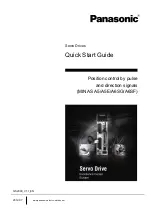
VLT
®
6000 HVAC
MG.60.B1.02 - VLT is a registered Danfoss trademark
12
1. Mains voltage
3 x 200 - 240 V AC, 50 / 60 Hz
3 x 380 - 460 V AC, 50 / 60 Hz.
2. Rectifier
A three-phase rectifier bridge that rectifies AC
into DC current.
3. Intermediate circuit
DC voltage =
√
2 x mains voltage [V].
4. Intermediate circuit coils
Smooth the intermediate circuit current and limit
the repercussive effect of harmonic currents on
the mains supply.
5. Intermediate circuit capacitors
Smooth the intermediate circuit voltage.
6. Inverter
Converts DC voltage into variable AC voltage
with a variable frequency.
7. Motor voltage
Variable AC voltage, 10-100% of the supply
voltage.
8. Control card
This is where to find the microprocessor that
controls the inverter which generates the pulse
pattern by which the DC voltage is converted
into
variable AC voltage with a variable frequency.
■
■
■
■
■
Control principle
A frequency converter rectifies AC mains voltage into
DC voltage, after which the DC voltage is converter
into an AC current with a variable amplitude and
frequency.
The motor is thus supplied with variable voltage and
frequency, which enables infinitely variable speed
regulation of three phase, asynchronous standard
motors.
The development of the VVC
PLUS
principle is the result
of a wish to maintain robust, sensorless regulation
that is tolerant to different motor characteristics
without motor derating being required.
First and foremost, the current measurement and the
motor model have been improved. The current is split
into magnetising and torque-generating parts and
provides for much better and quicker estimation of
the actual motor loads. It is now possible to
compensate much better for frequent load changes.
VVC
PLUS
control principle
The VLT 6000 HVAC has an inverter system called
VVC
PLUS
, i.e. a further development of Voltage Vector
Control (VVC). This principle is known from such
units as Danfoss VLT 3500 HVAC.
VVC
PLUS
controls an induction motor by energizing it
with a variable frequency and a voltage that matches
it. If the motor load is changed, the magnetisation
and speed of the motor change too. Consequently,
the motor current is measured continuously and the
actual voltage requirement and slip of the motor are
calculated from a motor model. Motor frequency and
voltage are adjusted to ensure that the motor
operating point remains optimised under varying
conditions.













































